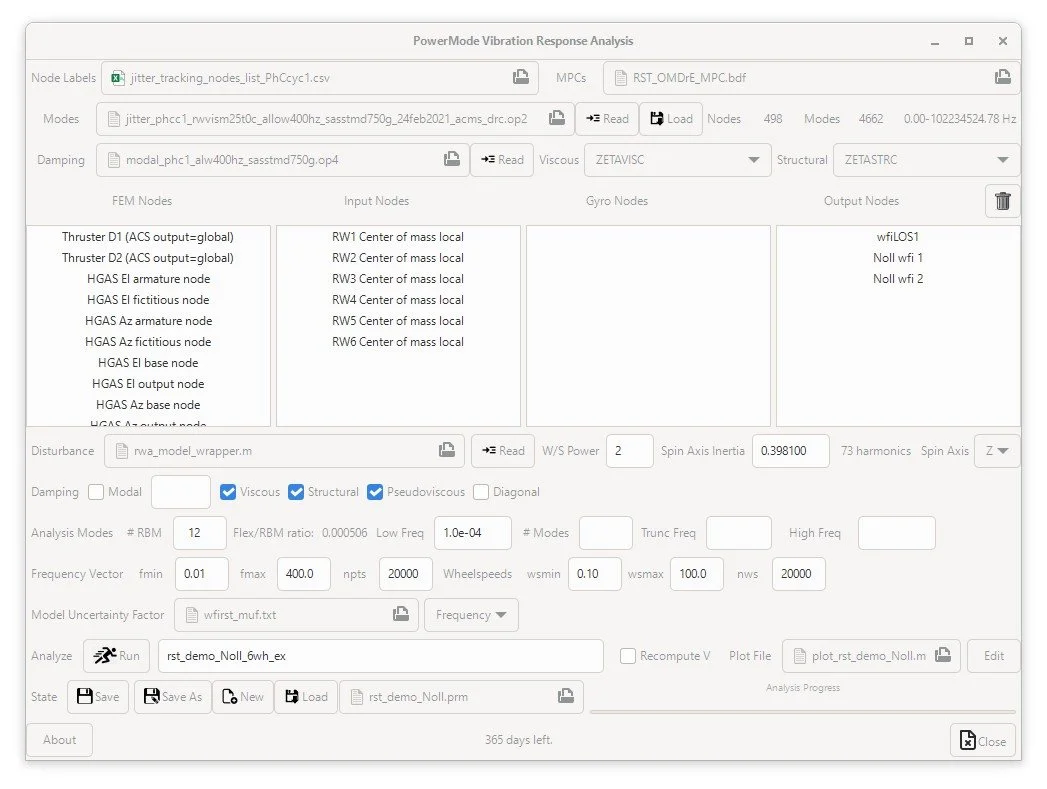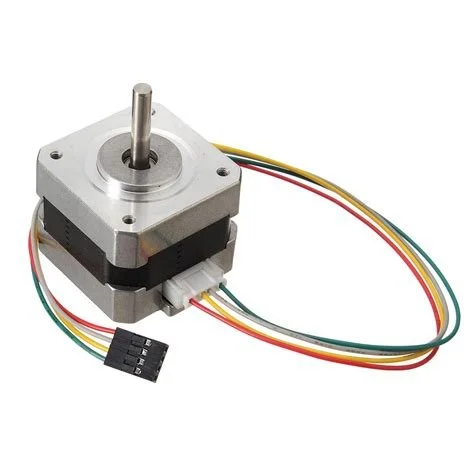PowerMode
Vibration Response Analysis done right
PowerMode
Power Spectrum Vibration Response Analysis with Normal Modes
PowerMode computes the frequency domain steady state forced vibration response of a flexible structure using Normal Modes extracted from a Finite Element model. It assembles a dynamic model of the structure, from user-specified disturbance input locations to performance response locations, with any of a variety of damping models. The output of each response location can be specified as displacement, rate, or acceleration. It then impinges disturbance spectra to compute response spectra. Node labels can be provided to assist the user in managing inputs and outputs. PowerMode is implemented to time- and memory-efficiently analyze very high order systems, with ~10,000 modes typically used for certain applications. The response is saved to a MathWorks® MATLAB® MAT-file for post-processing and plotting.
PowerMode provides a point and click interface to allow the user to select input files via browsing or drag-and-drop, and then define the analysis cases by dragging and dropping available data into the analysis flow. No typing required.
PowerMode accepts disturbances as frequency domain power spectra or as tonal/harmonic models. The latter are generated by spinning or reciprocating mechanisms and consist of tones that occur at multiples of the spin rate or reciprocating frequency. Gyroscopic moments for spinning mechanisms are supported.
Damping can be specified as constant modal damping, or a modal damping vector, all the way to fully coupled viscous and structural damping. Complex valued structural damping can be converted to a near-equivalent real pseudoviscous form for time simulations.
Modeshape amplitude error is accommodated using a multiplicative Model Uncertainty Factor (MUF) that scales the response amplitude. The MUF can be applied in the frequency domain, or can scale the input or output matrices to facilitate time simulations.
In many cases, the response of interest is a weighted function of the motion of multiple locations. A common example is an optical response such as Line of Sight (LOS) error, which is a function of the motions of all of the optics in the optics train. In this case a Linear Optical Model (LOM) can be computed using ray tracing in optical modeling software, then written as a set of NASTRAN format Multi-Point Constraints. The MPC equations can be incorporated in the Normal Modes run; PowerMode also has the ability to read in MPC bulk data and apply them internally to the physical modeshapes.
The PowerMode dynamic model can be exported in state space form for use in other analyses, for example time simulations.
Vibration response analysis is used in a broad range of industries and applications. A sampling of examples:
automotive – noise, vibration, harshness
civil engineering – seismic response
consumer products – appliance noise control
aviation – cabin noise reduction
spacecraft – mechanism induced flight vibration response; also referred to as spacecraft jitter analysis when applied to optical responses
machining operations – cutting tool chatter minimization
PowerMode requires:
Normal Mode input data from a Finite Element modeling package. Currently NASTRAN files are read natively, and modes from other FE packages can be provided as MAT-files.
MATLAB is required for post-processing the response, and for reading certain input file formats.
Runs on Microsoft Windows.
IMPORTANT: You must have an executed PowerMode Software License Agreement in place in order to purchase, install, or activate the software. You may download the agreement using the link below, sign it, and send it to sales@powermodesoftware.com. The executed agreement will be returned to you along with the password to access the store where the software is available for purchase.
Featured Products
PowerMode
$2,500 per seat per year
30 day trial available
Tonal Disturbance Model Development
Coming soon
Stepper Motor Simulation
Coming soon
IMPORTANT: You must have an executed PowerMode Software License Agreement to access the store.




